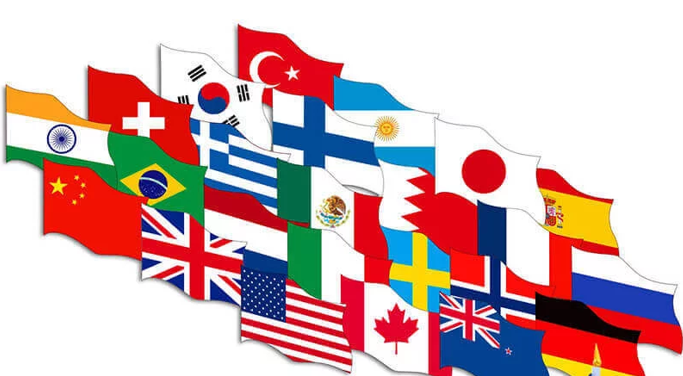Read About Top Countries With The Most Universities In The World

Education stands as a vital pillar in a nation’s progress. It not only equips students with the essential skills and knowledge required for professional success but also moulds the culture and societal fabric of a country.
Graduates from universities frequently spearhead innovation, research, and developmental initiatives, serving as indispensable contributors to a nation’s advancement. Moreover, university education functions as a pivotal tool for fostering social mobility. It extends the chance for educational and career progression to students from diverse backgrounds, irrespective of their socioeconomic standing. This, in turn, fosters equality and strengthens social unity within a nation
The number of universities in a country is an essential measure of its asset in education and research. It also reflects the quality of education and the level of growth in country. In this object, we will discuss World top 10 countries with the most universities.
United States
The United States boasts the world’s largest number of universities, with over 4,500 institutions comprising a diverse range, from private and public universities to community colleges and esteemed research institutions. Among these are some of the globe’s most renowned universities, including Harvard, Stanford, and MIT, solidifying the US as a hub for exceptional higher education.
China
China stands as home to the world’s second-largest count of universities, boasting over 2,800 institutions. The nation has made substantial investments in education, resulting in many of its universities securing top ranks globally. Notable among these esteemed institutions are Peking University, Tsinghua University, and Fudan University, emblematic of China’s burgeoning influence in higher education on the international stage.
India
India holds the distinction of hosting the world’s third-largest array of universities, surpassing 1,000 institutions. With a rich educational legacy, many of India’s universities boast a venerable history, counting among the oldest globally. Renowned institutions such as the Indian Institutes of Technology, the Indian Institutes of Management, and the University of Delhi exemplify India’s academic prowess and heritage in the realm of higher education.
Russia
Russia boasts a formidable count of over 800 universities, securing its place as the world’s fourth-largest hub of higher education. Renowned for their robust programs in science and engineering, many Russian universities stand out for their academic excellence. Institutions like Moscow State University, Saint Petersburg State University, and Novosibirsk State University represent the pinnacle of academic achievement in Russia, drawing international recognition for their contributions to education and research.
Japan
Japan boasts an impressive roster of over 700 universities, earning its place as the world’s fifth-largest host of higher education institutions. Renowned for its profound commitment to education and research, Japan has many universities ranked among the world’s finest. Esteemed institutions such as the University of Tokyo, Kyoto University, and Osaka University stand as pillars of academic excellence, showcasing Japan’s dedication to scholarly pursuits and innovation on a global scale.
Brazil
Brazil boasts an extensive network of over 600 universities, positioning itself as the sixth-largest host of higher education institutions worldwide. With a robust educational heritage, Brazil’s universities have gained recognition for their esteemed programs in science and technology. Among the country’s acclaimed institutions are the University of São Paulo, the Federal University of Rio de Janeiro, and the Federal University of Minas Gerais, emblematic of Brazil’s commitment to academic excellence and innovation in higher learning.
Germany
Germany boasts a robust array of over 500 universities, securing its place as the world’s seventh-largest hub for higher education institutions. Renowned for its unwavering focus on education and research, Germany houses numerous universities that rank among the global elite. Notable institutions like the Technical University of Munich, Heidelberg University, and the University of Berlin exemplify Germany’s commitment to academic excellence, innovation, and their pivotal role in advancing education and research on a global scale.
Mexico
Mexico boasts a substantial network of over 400 universities, earning its place as the world’s eighth-largest host of higher education institutions. With a rich educational legacy, Mexico’s universities have gained acclaim for their distinguished programs in science and technology. Among the country’s esteemed institutions are the National Autonomous University of Mexico, the Monterrey Institute of Technology and Higher Education, and the University of Guadalajara, epitomizing Mexico’s commitment to academic excellence and innovation in higher learning.
Spain
Spain boasts a diverse array of over 300 universities, securing its position as the world’s ninth-largest host of higher education institutions. With a deep-rooted tradition of education, Spain’s universities have garnered recognition for their notable programs in science and technology. Among the country’s renowned institutions are the University of Barcelona, the Autonomous University of Madrid, and the University of Valencia, showcasing Spain’s dedication to academic excellence and innovation in higher education.
France
France hosts a diverse array of over 200 universities, placing it as the world’s tenth-largest hub for higher education institutions. With a storied legacy in education and research, France’s universities have consistently earned high rankings globally. Notable among these esteemed institutions are Sorbonne University, École Polytechnique, and Paris Sciences et Lettres University, epitomizing France’s commitment to academic excellence and its influential role in shaping higher education and research on an international scale
Conclusion
Indeed, universities encounter several significant challenges in their quest for progress. The escalating cost of education remains a primary concern, with investments in technology and infrastructure driving up tuition and fees, posing a barrier to accessibility for numerous aspiring students.
The rapid pace of technological evolution presents another formidable challenge. Universities must swiftly adapt to these changes, ensuring that students receive pertinent skills demanded by the evolving workforce. This adaptation necessitates substantial investments in new technologies and ongoing training for faculty and staff, demanding continuous innovation and resource allocation.
Furthermore, the imperative to foster diversity and inclusion within university settings persists. Despite strides made, there remains a considerable gap in achieving comprehensive diversity and inclusivity. Many institutions are actively striving to create more welcoming and supportive environments for students from diverse backgrounds and identities, yet there’s considerable ground to cover in this ongoing journey toward true inclusivity.








